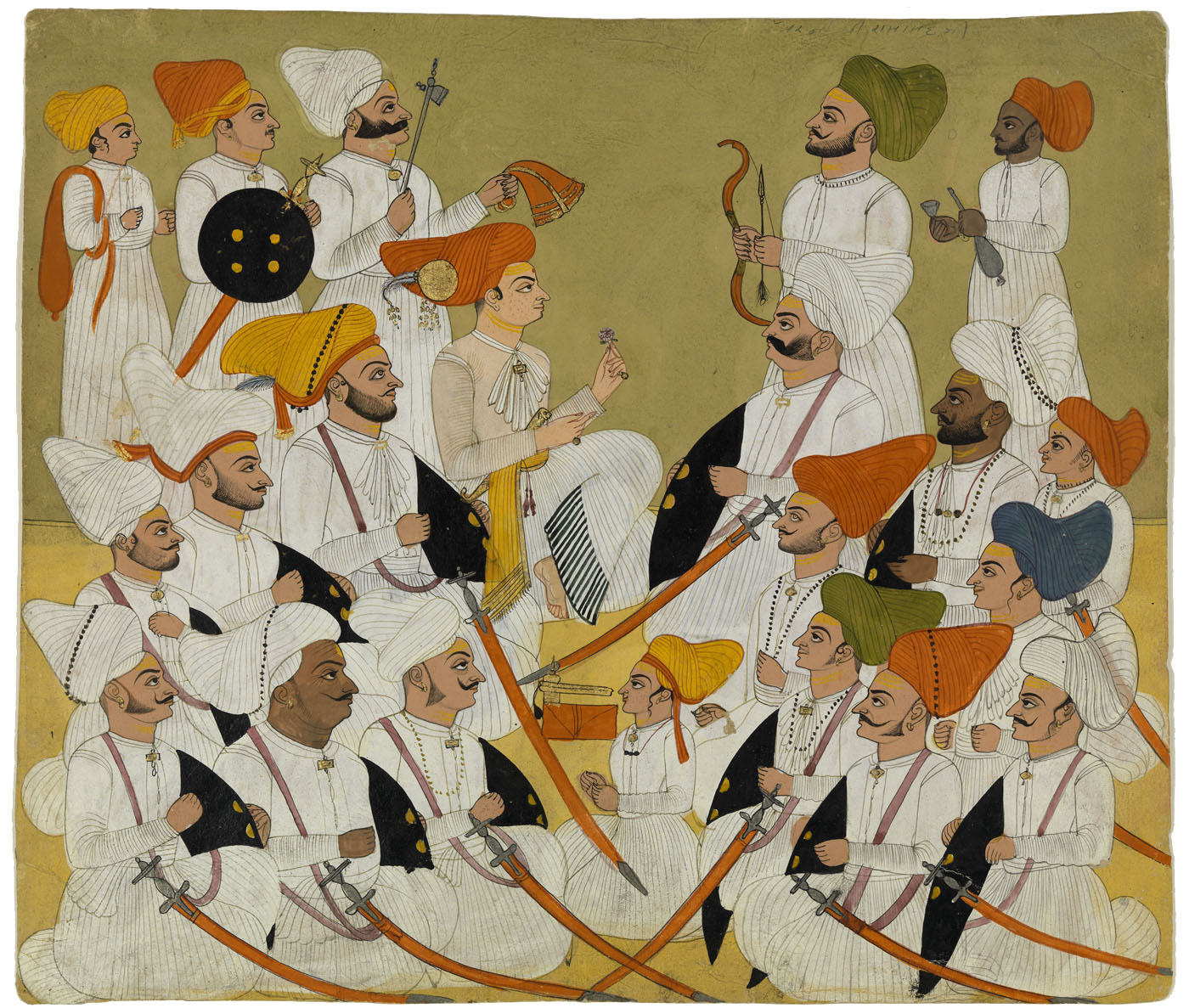CREATE
Unknown (Rajasthan, Marwar)
The Darbar of Kunvar Rai Ram Singh of Jodhpur, ca.1745-50
This painting of the Mughal emperor's state council shows careful attention to the use of lines. After close examination of the way this artist uses lines, hone your own sense of line using these exercises:
Contour line drawing
Select an object to study like a leaf, shell, or your own hand. Draw a line to show the outer contours or edges of the object, moving your eye along the edge of the object as you draw. Include lines or edges that run across the object as well, such as folds and creases. The goal is to spend more time looking at the object than at your paper. Try to make one, long, continuous line that carefully describes the shape of the object without ever lifting your pencil from the paper. Experiment with different drawing tools such as crayon, charcoal, ink, and conte crayon. As you gain experience controlling the drawing tool, you can vary the pressure to create fine or heavy lines.
Blind contour drawing
For an extra challenge, try making a contour drawing done entirely without looking at the paper! The goal is not necessarily to create a beautiful drawing, but to challenge your hand, eye, and brain to really work together.
Upside-down drawing
This is a classic exercise to help focus your attention on line and composition. Print out a copy of Pablo Picasso's drawing Igor Stravinsky. Rotate the picture so that you are viewing it upside down. Make a copy of the drawing on a blank sheet of paper, being careful to replicate the original as closely as you can, paying attention to the lines and the spaces between them. When you have completed the image, turn both right side up and compare! Now try the exercise with this line drawing of Vishnu Carried by Garuda Through a Stormy Sky from the WCMA collection.


